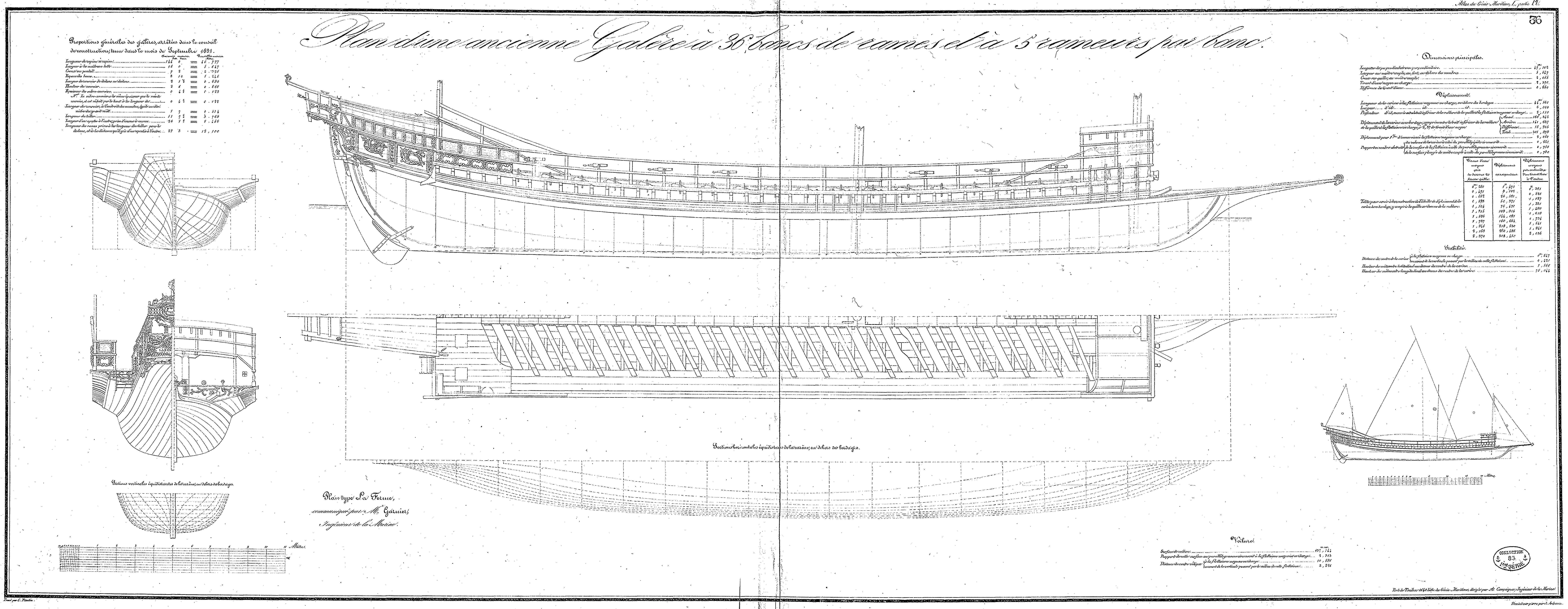Venetian Galley | 13th-15th century

" The use of artillery in Mediterranean galley warfare was often perceived as being restricted to the firing of single salvos at very short range before ramming and boarding the enemy ship enabled the main fight in close combat. The article contests the reasons contemporary literature gives for this tactic and argues that it was both feasible and beneficial to fire multiple times, starting at a relatively long range. It shows that galley captains at Lepanto had orders to fire multiple times and that many of them, on both sides, actually did. Senior military experts advocated a variant of the multiple-shot artillery tactic as the core of an innovative doctrine of galley warfare that involved fighting with artillery at a distance, without boarding." \ Dr. Joseph Eliav




A galley is a type of ship that is propelled mainly by rowing. The galley is characterized by its long, slender hull, shallow draft and low free-board (clearance between sea and railing). Virtually all types of galleys had sails that could be used in favorable winds, but human strength was always the primary method of propulsion. This allowed galleys to navigate independently of winds and currents. The galley originated among the seafaring civilizations around the Mediterranean Sea in the late second millennium BC and remained in use in various forms until the early 19th century in warfare, trade and piracy.
WHAT
Venice is actually a series of small islands in a lagoon so transportation can be unique. Mobility in Venice, a fish-shaped city surrounded and crossed by water, is characterized by two viability systems: waterways, canals and streams, and pedestrian walkways consisting of, in Venetian language, calle, campo, fondamenta, salizzada; the island-made city is connected by a substantial number of bridges. It is therefore easy to understand why Venice's transportation is primarily a water borne experience.
WHERE
HOW
In the 14th and 15th centuries merchant galleys traded high-value goods and carried passengers. Major routes in the time of the early Crusades carried the pilgrim traffic to the Holy Land. Later routes linked ports around the Mediterranean, between the Mediterranean and the Black Sea and between the Mediterranean and Bruges— where the first Genoese galley arrived at Sluys in 1277, the first Venetian galere in 1314— and Southampton.
Although primarily sailing vessels, they used oars to enter and leave many trading ports of call, the most effective way of entering and leaving the Lagoon of Venice. The Venetian galera, beginning at 100 tons and built as large as 300, was not the largest merchantman of its day, when the Genoese carrack of the 15th century might exceed 1000 tons. In 1447, for instance, Florentine galleys planned to call at 14 ports on their way to and from Alexandria.
The availability of oars enabled these ships to navigate close to the shore where they could exploit land and sea breezes and coastal currents, to work reliable and comparatively fast passages against the prevailing wind. The large crews also provided protection against piracy. These ships were very seaworthy; a Florentine great galley left Southampton on 23 February 1430 and returned to its port at Pisa in 32 days. They were so safe that merchandise was often not insured.[54] These ships increased in size during this period, and were the template from which the galleass developed.




